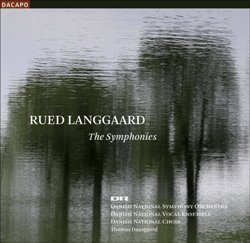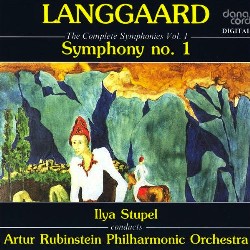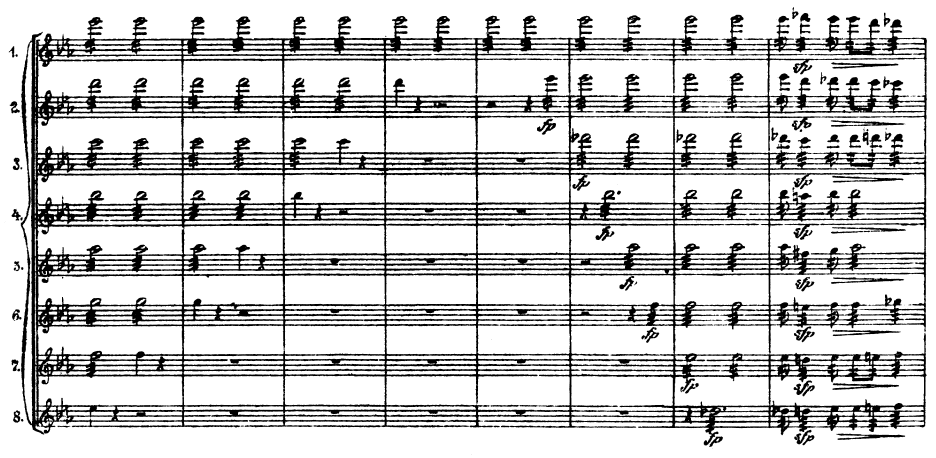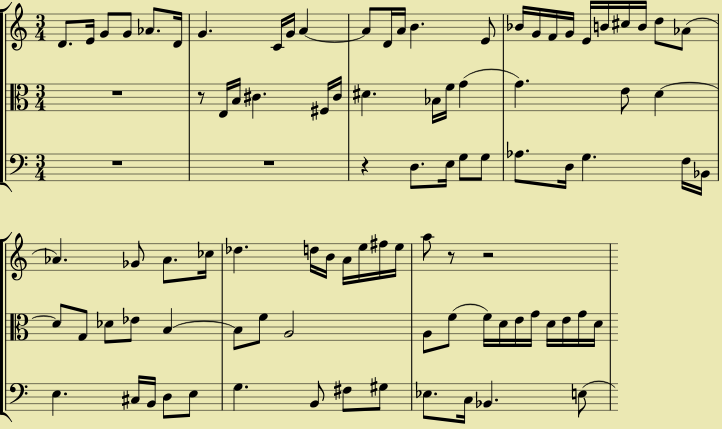
Langgard: The Symphonies
Danish National Symphony Orchestra, Thomas Dausgaard
Dacapo
7 CDs, released 2009
Buy at Amazon.com
___________

Langgard: Symphonies
Artur Rubinstein Philharmonic Orchestra, Ilya Stupel
Danacord
7 separate volumes, recorded 1991–2
Buy at Amazon.com
Essential for Langgaard completists, not so much for the rest of us
Devoted fans of the New York Jets can testify to the experience of a single early breakthrough being followed by decades of disenchanting mediocrity. Likewise if you set out to traverse one of the available sets of complete Langgaard symphonies based on his reputation as a hitherto neglected avant-gardist, then you might wind up disappointed.
It's true that Langgaard ended his career marginalized by his Danish contemporaries, but it wasn't because he was too radical — it was because he was too old fashioned. Langgaard's credentials as a modernist are basically confined to an eight year period of his career (roughly 1916–1924), within which exactly one piece, Music of the Spheres, qualifies as visionary. The latter is a bona fide sensation, worth considering alongside the contemporaneous experiments with tone clusters and timbrally-oriented music of Ives, Cowell and Ornstein. In its repetitive phrasing (e.g., I wish…! movement), its use of physical space as a musical parameter, and its innovative orchestration (as in the following excerpt for violins divided into eight sections), it anticipates several core ideas of musical postmodernism.

Unfortunately, though, Music of the Spheres stands alone in Langgaard's voluminous output for its quality and originality, though it's approached by Antikrist (a religious oratorio based on Revelation and disguised as an opera), some of the contemporaneous piano pieces (in particular Music of the Abyss, which often anticipates Messiaen) and a handful of late works like the 1948 piano piece Hél-Sfærernes Musik (only 21 bars long, but directed to be played "over and over again" at an "increasingly insane tempo"). None of Langgaard's numbered symphonies attain the caliber and imagination of these highpoints. With one exception, they adhere to the Late German Romanticism that brackets Langgaard's modernist period and characterizes the vast majority of his oeuvre.
The first few symphonies freely display their debt to the Romantics. Often the legacy of German orchestral writing is filtered through late 19th century Danish figures like Gade or Langgaard's father Siegfried, who was a composer and keyboardist in his own right. The result is a lush but undifferentiated pre-modernist style that reminds me of Franz Schmidt (a minor league Richard Strauss) and others like him. Langgaard's earliest symphonies are ambitious in scope and length, like the early works of Schoenberg and Mahler. No. 3 is more of a piano concerto than a symphony, anticipating Langgaard's increasingly loose usage of the term "symphony" toward the end of his career. And right from the start, Langgaard insists on attaching peculiar subtitles to his symphonies, often referring to his idiosyncratic eschatological Christianity, or esoteric details in Danish history. Something else in evidence in these works is Langgaard's propensity to go back and extensively revise earlier compositions, frequently creating something of a textual mess in the process.
With the Sixth Symphony, begun in 1919, things get more interesting. Langgaard provided the subtitle "Det Himmelrivende" which I gather alludes to a "boundless longing" for heaven and the divine, the struggle between good and evil and "the sharp knife-edge of the shimmering, golden heavens in dissonance" which seems no more obscure than numerous other superstitious references in Langgaard. Not surprisingly, several passages in this symphony were also used in Antikrist. This symphony is in a single movement, though it divides into distinct sections. It's ostensibly a theme with variations, but it's perhaps best heard as a fantasia on a "do re fa" motto that begins the main theme and most of its subsequent recurrences:
The work begins with a broad, chromatic passage for strings, essentially one long chorale melody (Antikrist ends with a diatonic "straightening out" of this theme). After a pause, a more animated section begins, leading to a passage starting at 5:00 that sounds very much like Janáček with its repetitions of short tonal phraselets and foregrounding of trumpets. Immediately following this is a genuine atonal fugato, our first real glimpse of modernism in a Langgaard symphony. The subject is based on the motto, and is first stated in the strings:
Later the Janáček-like phraselets return, and then at about 13:45 another atonal fugue starts up (this one reminiscent of Langgaard's contemporary Hindemith). Several of these contrapuntal passages turn up in Scenes 2 and 4 of Antikrist. Toward the symphony's climax, there's a marvelous Stravinsky-informed passage comprised of repeated riffs of different lengths in different instrumental groupings. This climaxes with a restatement of the motto theme in retrograde. A string passage in Scene 6 of Antikrist is based on this section. The piece ends, somewhat implausibly, in F major (the same key that Antikrist closes in), with trumpets and timpani prominent, reflecting the obvious influence of Nielsen's Fourth Symphony, completed a couple years previously.
The Seventh Symphony, started in 1925, takes us back to unreconstituted late Romanticism, owing more to Strauss, Dvořák and Grieg than to any modernist. Indeed Langgaard would spend the rest of his career inhabiting this vein, repudiating the musical and social implications of modernism, and even excoriating Carl Nielsen, among the most inoffensive of the 20th century's major musical minds, for being excessively modern. A few of Langgaard's later symphonies are choral. And though his music stayed stylistically derivative until his death, starting after World War 2 it often became eccentric in other ways. Symphony No. 16, for example, sounds more like a ballet suite than a symphony, despite its title. And Symphony No. 11 clocks in at a mere six minutes and requires several extra tubas. If only it didn't sound like a short and conventional late Romantic concert overture with an oversized tuba section then it might inspire the sort of grudging admiration accorded to Ives for daring to call for a two-bar viola solo in the midst of the Concord Sonata.
But Langgaard, having set out earlier on a trajectory that might have made him the Danish analog to Ives ended up as more of a Danish counterpart to Havergal Brian: a prolific and subsequently cultified maverick capable of occasional interesting moments amid much conventional bombast.
I encourage all lovers of Western art music to hear Music of the Spheres, the Sixth Symphony, Antikrist (which reuses passages from the previous two), the Third String Quartet and perhaps a couple of later works to get a taste for their "Strauss with a bit of quirkiness" milieu. Most of the rest of Langgaard's output can be fairly regarded as lower tier neo-Romanticism. Indeed if it hadn't been for the rediscovery and latter-day notoriety of Music of the Spheres (Per Nørgård surreptitiously showed it to Ligeti while judging a composition contest in 1968, whereupon the latter exclaimed "I have just discovered that I am a Langgaard epigone!"), Langgaard would probably still be lurking in the shadows of music history. But if you've found it rewarding to survey the symphonies of composers like Martinů, Holmboe and Rubbra, or if you simply crave late Romantic music and enjoy spending time exploring its B- and C-list, then you'll be well served adding Langgaard to your bucket list.
- First published December 2015
![]()
Selected writings |
Schellsburg home
Jerry Hunt |
cribbage
![]()
Original Material and HTML Coding Copyright © 2015–17 by
Michael Schell. All Rights Reserved.

